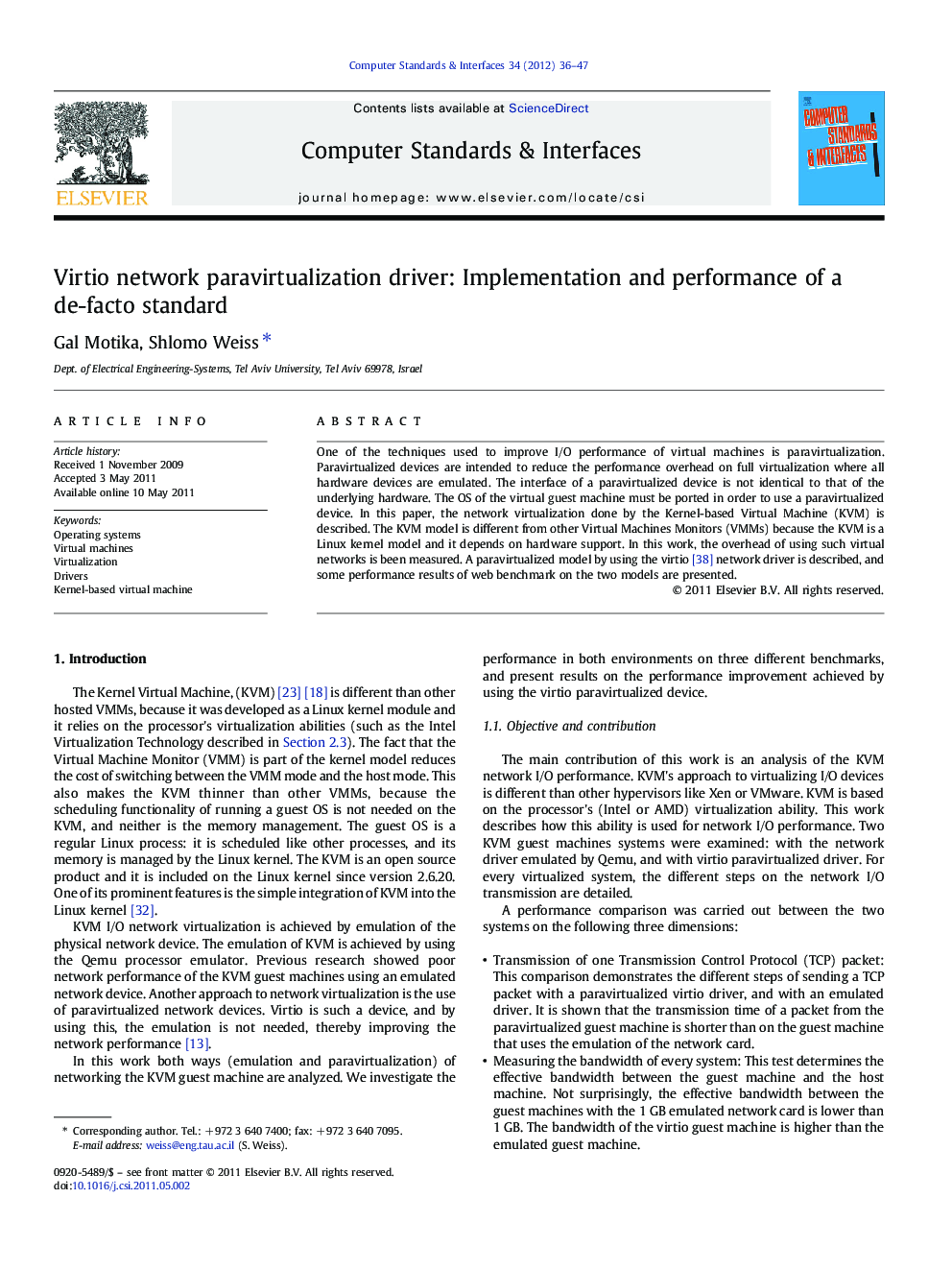| Article ID | Journal | Published Year | Pages | File Type |
|---|---|---|---|---|
| 453400 | Computer Standards & Interfaces | 2012 | 12 Pages |
One of the techniques used to improve I/O performance of virtual machines is paravirtualization. Paravirtualized devices are intended to reduce the performance overhead on full virtualization where all hardware devices are emulated. The interface of a paravirtualized device is not identical to that of the underlying hardware. The OS of the virtual guest machine must be ported in order to use a paravirtualized device. In this paper, the network virtualization done by the Kernel-based Virtual Machine (KVM) is described. The KVM model is different from other Virtual Machines Monitors (VMMs) because the KVM is a Linux kernel model and it depends on hardware support. In this work, the overhead of using such virtual networks is been measured. A paravirtualized model by using the virtio [38] network driver is described, and some performance results of web benchmark on the two models are presented.
Research highlights► This work provides an analysis of KVM’s network I/O performance. ► Examines an Intel processor's virtualization ability and how this ability is used for network I/O. ► Compares an emulated network driver with the virtio paravirtualized driver. ► Provides an applicative comparison on web servers, and ► Determine the difference on CPU and memory utilization of guest machines.
